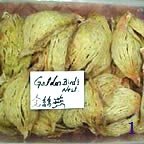
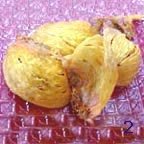
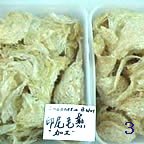
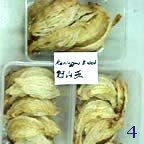
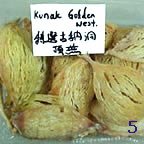
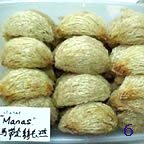
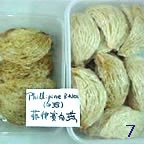

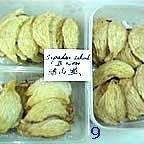
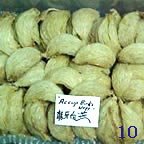
HOME > Agriculture > Poultry > Swiftlets and Edible Birds Nests
Swiftlets and Edible Birds Nests
Asian Swallow Bird Nests
"swallow's nest". yŗn wō (燕窝)
Swallow bird nests are accepted by Asia to have medical and health enhancing
effect, a rejuvenating agent that slows down the aging process.
Swallow nests also act as demulcent to the lungs and are used in relieving
phlegm and coughs.
It is an excellent supplement for all ages:
- Elderly and Children - stimulate appetite and aids digestion
- Pregnant woman - give birth to a beautiful and smooth complexion baby
- Patient - provide protein and nutrient to recover quickly from illness
- Women - make their facial skin smooth and lively










1-Golden bird's nest
2-Golden bird's nest
3-Indonesia bird's nest
4-Keningau bird's nest
5-Kunak bird's nest
6-Manas bird's nest
7-Philippines bird's nest
8- Sandakan Black bird's nest
9- Sipadan bird's nest
10-White bird's nest
Swiftlets Nests - 燕窝Traditional Chinese Health Food -



For centuries in China these nests have been considered nourishing and tasty as
well as a booster of health for the sick and aging; they are even believed to be
an aphrodisiac.
By 2020. Malaysia is expected to have 63,000 swiftlet premises producing 870
metric tones of bird's nest worth RM3.5 billion.
In 2010 alone, the production of bird's nest was around 290 metric tones valued
at RM1.2 billion.
Malaysian government has identified swiftlet farming as a high potential
industry, and as such, accorded it priority in the Economic Transformation
Programme (ETP)
In Sabah, the production of Edible Bird Nest (EBN) had long been practiced,
particularly, traditional bird's nest of high quality from caves, including Gua
Guomantong and Gua Madai.
The export value of bird's nest contributed by Sabah was in the range of about
RM13 million to RM17 million annually, with the main markets being Hong Kong and
China.
He said apart from caves, the rearing of swiftlets was on the rise. According to
the Sabah Wildlife Department, in just 2009, there were 500 swiftlet premises in
Sabah.
2 types of bird's nests for export from Malaysia
| 1 | 2 |
| Unprocessed (Raw Bird's Nests) |
Processed (Clean Bird's Nests) |
Certificate of authenticity
Malaysian government is now investing in Radio Frequency Identification (RFID)
to allows a product to be easily tracked from the source to the consumer.
The bird's nests can be sealed in a box with an RFID tag that contains a
microchip embedded with details about the harvest. A handheld scanner emits a
radio frequency to unlock that information. Sound similar to barcodes, but RFID
tags are harder to duplicate.
Swiftlet farmhouse


Swiftlet farms are built in large cavernous buildings, that offer plenty of
surfaces for the swiftlets to build their nests

The nests of the swiftlet are formed from saliva, and are highly prized as the
main ingredient in bird's nest soup
BBC © 2012 :
http://www.bbc.co.uk/news/business-18193981
Birdís Nest Protocol
The new Birdís Nest Protocol ensure that Malaysiaís birdís nest fulfils the
standards required and is of high quality. In this new protocol, exporting
birdís nest require certifications from the Health Ministry and a certificate of
origin from the Veterinary Services Department.
The certificate of origin is important because it traces the origins of the
birdís nest through radio frequency to ensure that the edible birdís nest is
authentic and safe for consumption.
There are about 50,000 birdís nest traders in Malaysia but the ministry has only
managed to register about 2,000 in the last six months.
Edible birdís nest has been used in Chinese cooking for centuries. But China had
banned birdís nest from Malaysia after it was found to have excessive nitrite in
July 2011
Birdís Nest Museum :
www.theborneopost.com/2012
Swiftlets Farming - Birds' Nest Farming using Nesting Houses
July 13, 2012, Friday :
Sabah Birdís Nest Association (SABA) in collaboration with AMG Enterprise is
undertaking a plan for a birdís nest museum in Sandakan Town. The museum could
educate the public and tourists on the birdís nest industry which is currently
growing rapidly.
The museumís establishment could encourage the public to delve into the birdís
nest business and subsequently spur economic growth. The museum introduces the
birdís nest industryís potential for the ecosystem while at the same time reap
lucrative rewards for future businessmen. The birdís nest industry would boost
economic growth, especially in the rural areas that are involved.
When completed, the museum will be a tourist attraction in Sandakan. Visitors
will be fascinated by the internal design of the museum that will resemble a
birdís nest.
Birdnest Center - Breeding Swiftlet in
The Farming House
is a modern and commercialized way of producing birdís nest
The traditional way has been the harvesting from caves.
Swiflet farming is about attracting swiflets to inhabit in a man-built building,
which is referred to as swiflet house.
The swiflets would then start breeding in the swiflet house where, swiflet pairs
will build birdís nests for this purpose.
Birdís nest is where swiflets lay their eggs and hatch them. When the young
swiflets reaches maturity to fly and live independently, they would leave their
nests, leaving the nests ready to be harvested by the owner of the swiflet
house.
Nest harvesters in Indonesia have developed the practice of "farming" which
entails buying up houses with colonies of Mossy- nest Swiftlets which are
cross-fostered: the eggs of White-nest Swiftlets are placed in these nest
colonies.
Once mature the White-nest Swiftlets return to the house and establish a colony.
With the escalation in demand these sources have been supplanted since the late
1990s by purpose-built nesting houses, usually reinforced concrete structures
following the design of the SE Asian shop-house ("ruko").
These nesting houses are normally found in urban areas near the sea, since the
birds have a propensity to flock in such places.
This has become an extraordinary industry, mainly based on a series of towns in
the Indonesian Province of North Sumatra, which have been completely transformed
by the activity.
While the Edible-nest and Black-nest Swiftlet are not yet on the endangered
species lists of either CITES or the IUCN, there are measures which attempt to
protect them.
Supplier countries have domestic legislation to regulate importing/exporting,
hunting, poaching, and selling of Swiftlet nests.
For example, since 1934 there has been an ordinance in Sarawak, Malaysia which
permits the nests to be harvested only every 75 days.
Currently in Sabah only 2 harvests per year of White-nest Swiftlets are allowed.
Despite policies to protect the bird their numbers continue to decline, probably
a result of illegal trade which counts for a substantial percentage of harvested
nests.
The World Wide Fund for nature is currently preparing a proposal for the 1994
meeting of the Convention on International Trade on Endangered Species of Flora
and Fauna (CITES) which will be held in the United States.
The proposal will recommend that the Swiftlet species be placed on CITES'
Appendix II (threatened species).
The rising price and rising demand for these nests have resulted in a decline
in the swiftlet population.
Poachers and the cutting down of forests where Swiftlets feed contribute to the
decline.
Indonesia is the biggest supplier of swiftlet nests with
Thailand ranking second, followed by
Vietnam,
Singapore,
Burma,
Malaysia,
southern India and
Sri Lanka.
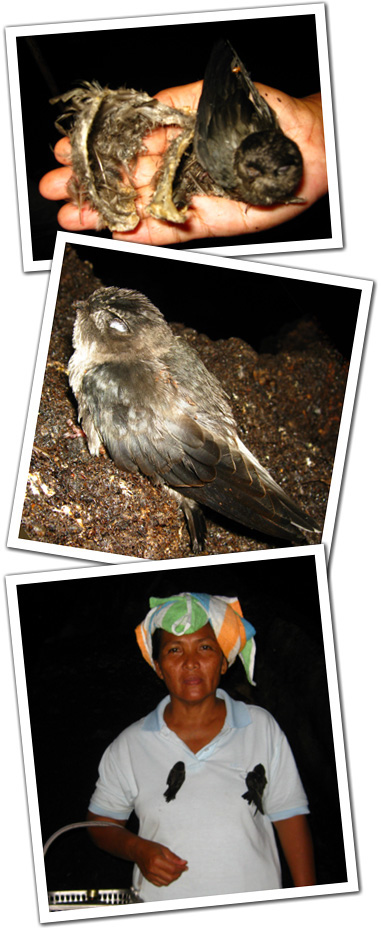
RELATED TOPICS
|
|
Agriculture |